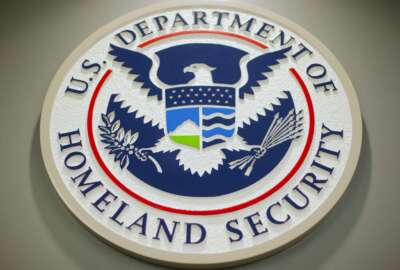With expanded budget, TSP to tackle cybersecurity, hiring
The Federal Retirement Thrift Investment Board — which manages federal employees' Thrift Savings Plan accounts — approved a 19 percent budget increase for the...
wfedstaff | April 17, 2015 4:13 pm
The Federal Retirement Thrift Investment Board, which manages federal employees’ Thrift Savings Plan accounts, approved a 19 percent budget increase for the coming year, allowing it to fund new cybersecurity and hiring initiatives.
The $170.5 million budget, which is more than $27 million above 2012 levels, was approved following a “rigorous review,” the board’s director of external affairs, Kim Weaver, told In Depth with Francis Rose.
The budget includes $4 million for new initiatives, which Weaver called “mission-critical.” That includes new cybersecurity measures, such as enterprise risk-management tools to fully comply with legislation requiring agencies to safeguard their networks.
“We have provided our participants with the security that is attendant with the IT systems we have,” Weaver said. “What we have not done a good job of is documenting that security. And so our first mission-critical initiative was to finish that so we are fully documented and dotted all the i’s and crossed all the t’s in that area.”
New funding will also allow the board to stand up a network operations center to provide better real-time network monitoring. A cyber attack against a contractor that maintained the board’s data centers compromised the information of 123,000 TSP participants last spring.
The board also approved new spending for human-capital initiatives.
“We need to hire employees. We are in a hiring mode unlike most of the rest of the government,” Weaver said. “And we need to be able to bring on people who can help us train and incorporate them into the TSP culture.”
Ongoing projects also get funding bumps
The lion’s share of the budget goes toward ongoing, or “steady state” projects, Weaver said.
“What we tried to do … was look at what do we need to do to ensure that our budget and our staffing level provides a consistent experience for our participants,” she said.
But steady does not imply zero-growth, she added. Over the past couple of years, the board has added new services, such as automatic enrollment and the Roth TSP option, which launched in May.
“As we had done that, we had not increased our budget or our staffing or our contracting support,” Weaver said. “And so what we were experiencing was sort of a hollowing out of our ability to provide that service to our participants.”
The $166.3 million in funding for these ongoing projects will reverse that, she added.
Because it’s mostly funded through participant fees — not the traditional appropriations process — the board is one of the few federal entities to have finalized a full 2013 budget.
But even though its budget circumvents the labyrinthine appropriations process, Weaver said the board is no less serious in its fiduciary responsibility to TSP participants.
“I really wanted to emphasize to our participants: I don’t want them thinking, ‘oh, we’re just getting crazy with their money,'” Weaver said.
In fact, participants are not likely to feel the costs passed on to them. Spread among the TSP’s 4.6 million participants, the increased budget equates to less than 50 cents per $1,000 invested, Weaver said.
RELATED STORIES
TSP numbers continue upward climb in August
Coming soon to YouTube — Videos about TSP accounts
TSP plans RFP to improve data center security by year’s end
Copyright © 2025 Federal News Network. All rights reserved. This website is not intended for users located within the European Economic Area.





